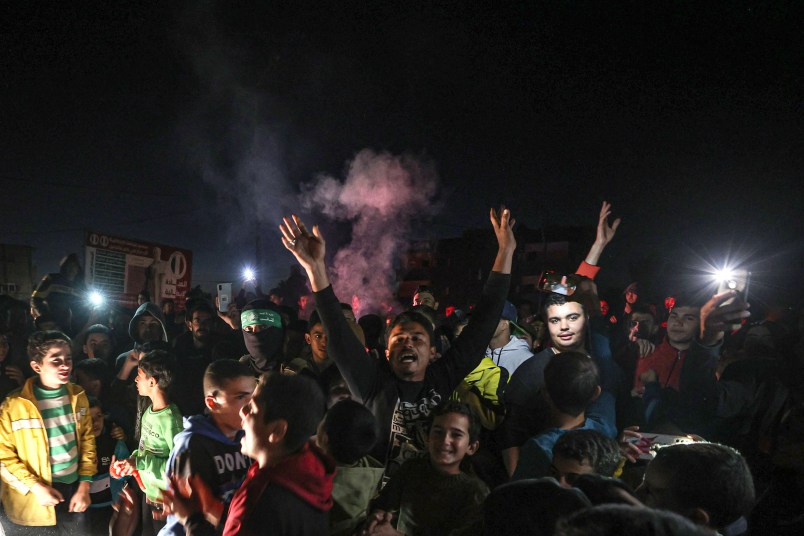I wanted to flag to your attention this post by John Ganz, someone who, if you’re not familiar with him, is well worth becoming familiar with. Ganz and I see the questions about Israel, the Palestinians and Zionism differently. Indeed I disagree with the title of the post I’m sending you to. But what is most important in writing, especially in commentary, is not that it be “right” but that it be illuminating. Reading what is “right” is often reading a more polished version of what we already think — the utility of which is limited. Ganz manages to approach these questions with insight as well as texture and elegance, no simple feat.
On that matter of disagreement, I want to note something about what I have written on this issue. If you read carefully, I seldom make positive arguments for any particular position or question on this topic. I tend to point up what I see as disconnects or inconsistencies in pat arguments and responses. This is partly temperamental. I don’t like making arguments or claims that aren’t packaged with strong and concrete defenses. It’s also because with all the internal media and imagery there’s a huge amount of what is going on that we simply don’t know. One such question is whether Israel’s retaliation in response to the October 7th massacres is justified.
Set aside the wild hyperbole and rhetorical fusillades about “genocide.” I see the costs as clearly as you do. I’ve watched the same videos of victims with their unspeakable cries of agony over the broken corpses of their loved ones. I make a point to watch them. But I won’t condemn Israel’s campaign of retaliation as wrong or immoral or an atrocity. Because any country will and must, in response to the level of atrocities we saw on October 7th, do everything in its power to deter and prevent such things from ever happening again. (One of the shaping moments in this whole episode for me was seeing how rapidly the massacres of October 7th became old news.) As I’ve argued previously, that means eliminating Hamas’s de facto army of roughly 30,000 fighters and removing it from power. But Hamas has a basic strategic doctrine of embedding itself among civilians and within civilian infrastructure to make any military campaign against it very difficult, both operationally and in terms of the huge loss of civilian life it inevitably brings with it. The leaders of Hamas know this and can be fairly said to revel in it. Ganz again quotes Ghazi Hamad, a member of Hamas political directorate who said not long after the fighting started, “Will we have to pay a price? Yes, and we are ready to pay it. We are called a nation of martyrs, and we are proud to sacrifice martyrs.”
What we are seeing unfold is a very deliberate political and military strategy on the part of Hamas to use the deaths in the thousands of its own civilians as a weapon against Israel to compensate for its own lack of conventional military power. Both Israel and Hamas have that blood on their hands.
I don’t know if this or that strategy is “right.” My aim is usually to press people on what follows from their decisions or demands. If the war stops now it would appear to leave Hamas’s de facto army and its control of Gaza more or less intact. That’s a choice, and one that is very difficult for Israel to accept since it likely leaves Hamas believing the original mission was a success, one that is very likely to be repeated. Indeed, Hamas officials have repeatedly said that it will be repeated. Again and again.
But something being necessary or justified does not address the separate question of whether it is working. Whatever else is happening, the war to date appears to have left Hamas’s leadership in Gaza intact to the extent that it can carry on detailed and complex negotiations with Israel, via intermediaries, over hostage and prisoner swaps. Israel’s estimates about the number of Hamas fighters it has killed or captured have varied greatly. At first the numbers were very low. Then they ranged up to 5,000. Now they’re as low as 1,000 or 2,000. The high variability is likely in large measure due to the fact that they don’t actually know. Most are people hiding in a tunnel infrastructure the IDF is trying to collapse. They also range because in most cases these are off the record comments from unnamed officials. So these aren’t formal estimates released on any consistent basis.
It’s also true that the number of dead or captured fighters may not be the most important metric. One thing about the kind of vast tunnel infrastructure Hamas has created under Gaza is that it makes you both close to invulnerable and also totally trapped. As the network grew more extensive and deeper underground, Hamas built a complex air exchange system, requiring large amounts of fuel, to keep the air breathable. By definition those critical sources of fresh air all terminate at ground level, easily destroyed by a military force if they can find them.
In theory, it may be the case that enough of the tunnel network has been compromised or destroyed that the remaining fighters are penned up in a small area and will sooner than later have to come out and surrender. I’m not saying that is the case. I merely note it as a possibility to illustrate that there are many ways in which the crude measure of killed and captured may not accurately capture what Israel’s campaign has accomplished to date.
With all this said, just how much progress have they made? If the number of fighters killed really is the metric and they’ve killed or captured 2,000 out of roughly 30,000 or more, that’s pretty little to show for the vast number of civilian casualties, immense physical destruction and fairly grave threats to Israel’s global diplomatic standing. The truth is that, especially watching at a distance from North America, we simply don’t know. But the Israeli war cabinet and the highest echelon of the IDF do know. Or at least they know quite a bit more than we do.
That means some key decisions will have to be made for when this ceasefire ends. If you read the diplomatic reporting closely you see that the US is making very clear to Israel that it can’t mount the same kind of aerial campaign in the southern Gaza Strip as it did in the north. Whatever it does must be much more focused and targeted.
With all these questions in mind, Zvi Bar’el makes an interesting suggestion in Haaretz. There are a number of poinst Bar’el makes about what we can infer from the decisions each side has made so far. You can read those in the linked column. The key one is this: Israel is already in fairly deep negotiations with Hamas through a number of different intermediaries. There’s an analog to the current situation many of us remember from August of 1982. Israel invaded Lebanon to drive the PLO out of the country. After a huge amount of death and destruction the IDF laid siege to Beirut where the PLO leadership and its cadres of fighters were holed up. There was eventually an agreement to allow the PLO to evacuate and leave. They decamped to Tunis and remained there until the beginning of the Oslo process about a decade later.
Is something like that possible? Bar’el isn’t saying it is. But he thinks it’s worth exploring and he’s right. Israel would like to physically destroy or capture all of Hamas’s leadership and army, both to eliminate the continuing threat and more generally as a matter of deterrence and retaliation. But what it absolutely needs is for Hamas no longer to be running Gaza, with its cadres and rockets and weaponry right on the other side of the Israeli border. So maybe that’s possible.
It’s also hard to imagine Hamas agreeing to this. But Israel is making it pretty clear it’s willing to commit a vast amount of destruction and killing and harm to its own relations with other countries to track down and kill every one of Hamas’s fighters and its leadership. The option of living to fight another day or simply just living might be attractive.
The other factor is that Israel isn’t the only player in this death match that has to be concerned about the backing of important patrons. Qatar is the safe haven for Hamas’s exiled leadership and it has bankrolled Hamas for years. Unlike Hamas, Qatar has a number of other diplomatic and national interest irons in the fire. Pressure applied to Qatar and Qatar’s pressure on Hamas could play a significant role in how this conflict ends.
It is an idea worth at least exploring. I suspect Bar’el wouldn’t have raised it if it weren’t being explored at some level.


 Member Newsletter
Member Newsletter
